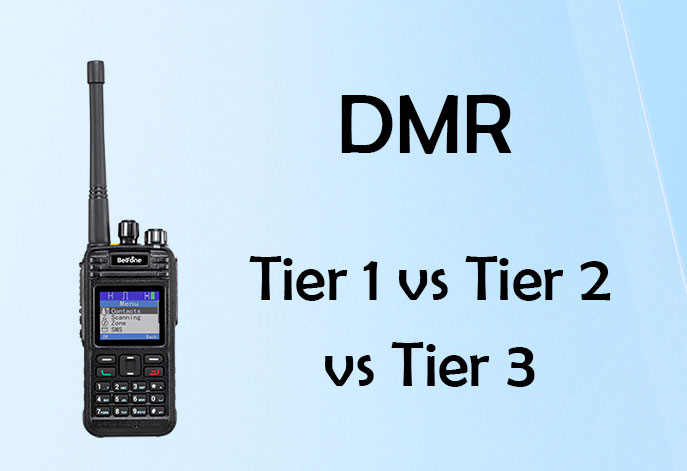
Digital Mobile Radio (DMR) is an international digital radio standard developed by the European Telecommunications Standards Institute (ETSI). It has 3 different DMR standards: DMR Tier 1, DMR Tier 2, DMR Tier 3. Today we are going to say the difference between DMR Tier 1, Tier 2 and Tier 3.
DMR Tier 1 features:
• It uses 446 MHz frequency band in Europe and US. This band is licence free band.
• ETSI specification defines two time slots in 12.5 KHz channels as per TDMA structure.
• The DMR Tier-1 devices transmit maximum power of 0.5Watt. It is used for low power transmission devices.
DMR Tier 2 features:
• It uses 66 to 960 MHz frequency band.
• This licenced band is used for mobile phones and conventional radio systems.
• DMR Tier-2 is direct replacement for analog conventional radio.
• This mode can use repeater to extend the radio coverage.
• This mode is used for high power transmission devices.
DMR Tier 3 features:
• It uses 66 to 960 MHz frequency band.
• It supports both voice and data transmission simultaneously.
• It operates in trunking mode.
• Supports packet data services including IPv4 and IPv6 formats.
• Supports short messaging services.
• It extends the coverage of the radio to wide area.
• It replaces analog radio system with digital trunked mode.
• DMR Tier-3 is used for variety of applications such as SCADA, remote monitoring and control, automation etc.
As a global leading technology and solution provider of mission and business critical communications, BelFone Communications provides full series of radio equipments range from DMR Tier 1, DMR Tier 2 to DMR Tier 3.